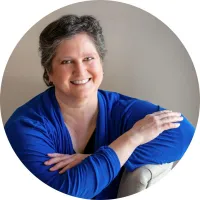Welcome to Tech Tips With The Tech Ninja!

Writing Non-Salesy Sales Emails
“One small tweak to the way you write your emails could make the difference between being ignored and getting booked.”
~ Kat Milner, Chief Tech Ninja
Introduction:
Nobody likes feeling pressured into a sale. Yet, email marketing remains one of the most powerful ways to build relationships with potential clients. The key? Creating an email sequence that nurtures leads without making them feel like they’re being sold to at every turn.
If you’ve ever wondered how to craft an engaging and effective email sequence that builds trust and naturally leads your audience toward working with you, you’re in the right place. Let’s break down the process step by step.
Understanding the Purpose of Your Email Sequence
Before you start writing, you need to define the goal of your sequence. Is it to:
Warm up new subscribers?
Guide leads toward a discovery call?
Educate and provide value before offering your services?
Clarity on your purpose ensures that your emails are aligned with your audience’s journey and don't feel forced or pushy.

1. Start With a Warm Welcome
Your first email should set the tone for the entire sequence. This isn’t the time for a hard sell. Instead:
Thank them for joining your list.
Reiterate what they can expect from you.
Deliver any promised lead magnet (if applicable).
Keep it warm, engaging, and focused on building connection.
Example subject line: “Welcome! Here’s what you can expect…”
2. Provide Value First
In the next few emails, focus on nurturing your audience by delivering high-value content. Share:
Quick tips or insights related to their pain points.
A personal story that relates to their challenges.
A case study or success story that showcases a transformation.
This approach builds trust and positions you as an authority while keeping the conversation natural.
Example subject line: “Struggling with [specific pain point]? Here’s what helped me…”
3. Address Common Objections
Your audience may have hesitations about working with you. Use one or two emails to gently address these objections through:
FAQs about your service.
Testimonials and success stories.
A mindset shift that helps them see why action is necessary.
Example subject line: “Worried about [specific objection]? Let’s talk about it…”
4. Introduce Your Offer Naturally
By now, your audience knows, likes, and trusts you. It’s time to let them know how they can take the next step.
Position your offer as a solution to their challenge.
Keep the tone inviting, not pushy.
Use storytelling to show how your offer creates transformation.
Example subject line: “Ready to achieve [specific desired result]? Here’s how I can help…”
5. Use a Gentle Call-to-Action (CTA)
Your final email in the sequence should make it easy for them to take action, whether that’s booking a call, signing up for a webinar, or enrolling in a program.
Reiterate the benefits.
Include a low-pressure CTA (e.g., "Let’s chat" instead of "Buy now").
Keep it open-ended (e.g., "Have any questions? Just hit reply!").
Example subject line: “Thinking about [specific solution you offer]? Let’s chat…”
6. Final Tips for a Non-Salesy Email Sequence
Write like you talk: Keep your emails conversational and personable.
Segment your audience: Send tailored content based on where they are in their journey.
Use storytelling: Stories make emails feel more engaging and less promotional.
Give more than you ask: When you focus on providing value first, sales become a natural next step.
A Few Final Thoughts
A well-crafted email sequence nurtures leads by providing genuine value, addressing their concerns, and naturally guiding them toward working with you—without the icky sales tactics.
If you’re ready to create an email sequence that converts while keeping it authentic, start implementing these steps today!
Want more help? Let’s chat about how you can optimize your email marketing for better conversions.
A Bonus Gift for You 🎁
If you would like 15 fantastic email subject lines to get you started, click here.
How Simplify Your Tech Can Help
If you are a little overwhelmed by all of this or find it confusing, you can schedule a complimentary Find Out More call here. I'm happy to help.
If you are not already using the Simplify Your Tech platform, book in for a complimentary tech review to see what options may work best for you.

